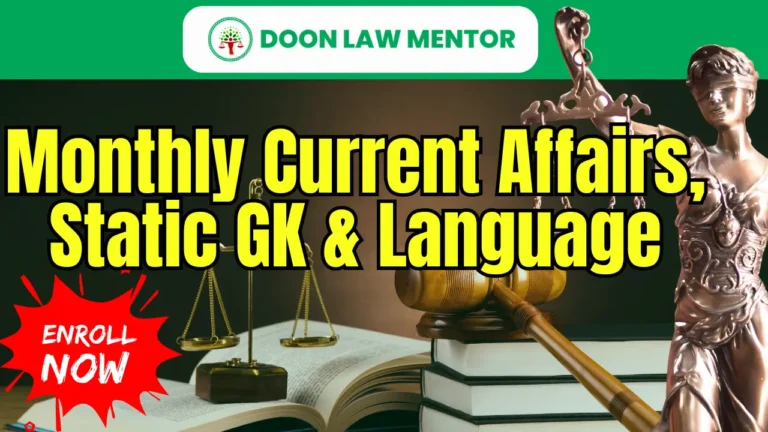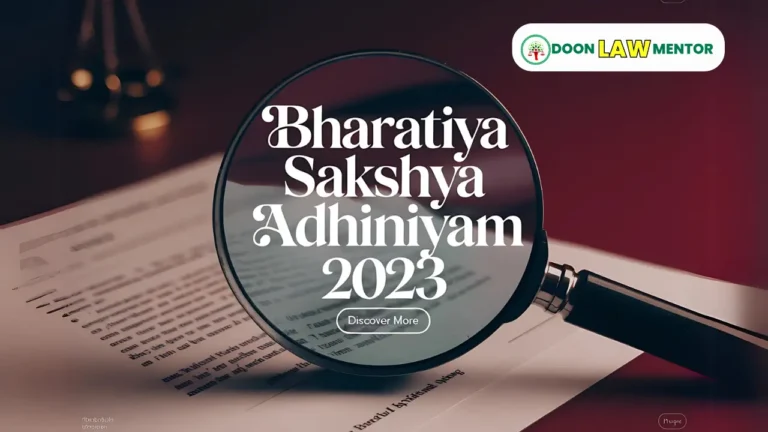Explore the Supreme Court on Lengthy Pleadings & AI in the 2025 case Annaya Kocha Shetty v. Laxmibai Narayan Satose, where the Court criticized bulky pleadings and AI-generated statements. Learn how Order 6 Rule 16 CPC empowers courts to strike out unnecessary pleadings. This blog delves into the Supreme Court on Lengthy Pleadings & AI ruling, its implications, and Order 6 Rule 16 CPC for Judiciary, APO, and JLO aspirants preparing for 2025 exams.
Table of Contents
Introduction
On April 8, 2025, the Supreme Court of India delivered a significant ruling in Annaya Kocha Shetty (Dead) Through LRs v. Laxmibai Narayan Satose Since Deceased Through LRs & Others, addressing the issue of lengthy pleadings and the use of AI-generated statements in civil suits. The Court expressed dismay over bulky pleadings that led to unnecessarily long judgments, advocating for concise pleadings under Order 6 Rule 16 CPC. The Supreme Court on Lengthy Pleadings & AI ruling also flagged the growing use of AI in legal pleadings, cautioning against its potential to disorient the cause of a case.
This judgment is a wake-up call for trial courts to regulate pleadings and ensure efficient litigation. For Judiciary, APO, and JLO aspirants, understanding the Supreme Court on Lengthy Pleadings & AI stance and Order 6 Rule 16 CPC is crucial for 2025 exams. This blog explores the case, the Court’s observations, the role of Order 6 Rule 16 CPC, and its implications for civil litigation and exam preparation.
Background: Annaya Kocha Shetty v. Laxmibai Narayan Satose (2025 SC)
The Supreme Court on Lengthy Pleadings & AI ruling arose from a civil dispute over tenancy rights under the Bombay Rent Act, 1973, in the case Annaya Kocha Shetty (Dead) Through LRs v. Laxmibai Narayan Satose Since Deceased Through LRs & Others. Heard by a bench of Justices Pankaj Mithal and SVN Bhatti, the case highlighted systemic issues in civil litigation.
Case Overview
- The dispute centered on tenancy rights, with the plaintiff filing a detailed plaint spanning eight pages.
- The defendant responded with an equally lengthy written statement of sixteen pages.
- The trial court admitted extensive oral evidence, resulting in a lengthy judgment.
- The appellate court’s judgment was similarly protracted, despite the core issue being straightforward: whether the agreement granted ownership of a hotel business or tenancy rights.
- The Supreme Court ultimately dismissed the appeal, imposed a cost of Rs. 1 lakh, and upheld the High Court’s judgment, concluding that the agreement clearly entrusted ownership of the hotel business, not tenancy rights.
Court’s Observations
- The Court noted that the lengthy pleadings led to an unnecessarily long trial and judgments, which could have been concise.
- It criticized the trend of “meandering pleadings” in civil suits, irrespective of the dispute’s nature.
- The bench highlighted the use of AI-generated or computer-generated statements in pleadings, cautioning that while technology enhances efficiency, “placid pleadings will disorient the cause in a case.”
- The Court advocated for trial courts to use Order 6 Rule 16 CPC to strike out unnecessary, frivolous, or vexatious pleadings, emphasizing the need for brevity and precision.
Read More: Top 10 Judiciary Exam Myths Every Aspirant Should Ignore: A Guide to Success
The Supreme Court on Lengthy Pleadings & AI: Key Observations
The Supreme Court on Lengthy Pleadings & AI ruling made several critical observations about the state of civil litigation and the role of technology in pleadings.
1. Critique of Lengthy Pleadings
- The Court expressed dismay at the trend of long and bulky pleadings, which burden the judicial system.
- It noted that the plaint (8 pages) and written statement (16 pages) in this case were excessively detailed, leading to a lengthy trial with unnecessary oral evidence.
- The trial court’s judgment was protracted, and the appellate court failed to capture the core issue concisely, resulting in an equally lengthy judgment.
- The Court warned that “long and drawn-out pleadings will run the risk of having a cascading effect on the appellate and revisional courts,” increasing case backlogs and wasting judicial time.
- It quoted Abraham Lincoln’s ode to a lawyer friend: “He can compress the most words into the smallest ideas of any man I ever met,” humorously underscoring the need for brevity.
2. Concerns Over AI-Generated Pleadings
- The Supreme Court on Lengthy Pleadings & AI flagged the growing use of AI-generated or computer-generated statements in pleadings.
- While acknowledging that technology enhances efficiency, the Court cautioned that “placid pleadings” created by AI can disorient the cause of a case, confusing the core issues.
- The bench emphasized that pleadings must remain concise and relevant to the cause, avoiding the risk of AI-generated content that may lack clarity or focus.
3. Call for Concise Pleadings
- The Court stressed that pleadings should be brief and precise, avoiding unnecessary or frivolous details.
- It stated, “Every word that is not a help is a hindrance because it distracts,” highlighting that concise pleadings enable courts to deliver “stitch in time” judgments.
- The Court urged trial courts to take a proactive role in regulating pleadings, ensuring they do not confuse the cause or burden the judiciary.
4. Advocacy for Order 6 Rule 16 CPC
- The Supreme Court on Lengthy Pleadings & AI advocated for the use of Order 6 Rule 16 CPC, which empowers courts to strike out or amend unnecessary, frivolous, vexatious, or abusive pleadings.
- The Court emphasized that trial courts must invoke this jurisdiction at the right stage to make litigation workable and reduce the burden on higher courts.
- It noted that such an approach would “save nine” by preventing lengthy pleadings from cascading into appellate and revisional courts, ultimately reducing case pendency.
Understanding Order 6 Rule 16 CPC: Legal Framework and Implications
Order 6 Rule 16 CPC is a provision under the Code of Civil Procedure, 1908, that empowers courts to regulate pleadings in civil suits. The Supreme Court on Lengthy Pleadings & AI ruling highlighted its importance in ensuring efficient litigation.
Text of Order 6 Rule 16 CPC
- Order 6 Rule 16 CPC states: “The Court may at any stage of the proceedings order to be struck out or amended any matter in any pleading which may be (a) unnecessary, scandalous, frivolous or vexatious; or (b) which may tend to prejudice, embarrass or delay the fair trial of the suit; or (c) which is otherwise an abuse of the process of the Court.”
- This provision gives courts discretionary power to strike out or amend pleadings that do not serve the cause of justice or hinder the trial process.
- The objective is to ensure that pleadings remain concise, relevant, and focused on the real issues in controversy between the parties.
Key Interpretations by the Supreme Court
- Necessity for Conciseness: The Court emphasized that pleadings must be brief and precise, avoiding unnecessary details that confuse the cause. It stated, “The effort of pleading and evidence should be to be concise to the cause and must not confuse the cause.”
- Proactive Role of Trial Courts: The Supreme Court on Lengthy Pleadings & AI urged trial courts to take a proactive role in invoking Order 6 Rule 16 CPC at the right stage, striking out frivolous or vexatious pleadings to prevent lengthy trials.
- Cascading Effect Prevention: The Court warned that meandering pleadings burden appellate and revisional courts, leading to “laden weight in SLPs” (Special Leave Petitions) and making the narrative difficult. Order 6 Rule 16 CPC can prevent this by ensuring concise pleadings at the trial stage.
- Balancing Technology and Clarity: While acknowledging the role of technology, the Court cautioned against AI-generated pleadings that lack focus, reinforcing the need for Order 6 Rule 16 CPC to regulate such content.
Implications for Civil Litigation
- Efficient Case Management: By striking out unnecessary pleadings, trial courts can deliver concise judgments, reducing case backlogs and saving judicial time.
- Reduced Burden on Higher Courts: Concise pleadings prevent the cascading effect on appellate courts, ensuring higher courts are not burdened with lengthy, irrelevant narratives.
- Regulation of AI in Pleadings: The Court’s caution on AI-generated statements highlights the need for judicial oversight to ensure technology does not compromise the clarity of pleadings.
Critical Analysis: Implications of the Supreme Court on Lengthy Pleadings & AI Ruling
The Supreme Court on Lengthy Pleadings & AI ruling in Annaya Kocha Shetty v. Laxmibai Narayan Satose has far-reaching implications for civil litigation and the use of technology in legal practice.
Strengths
- Promotion of Efficiency: The Supreme Court on Lengthy Pleadings & AI ruling reinforces the need for concise pleadings, which can streamline trials, reduce case pendency, and save judicial time, aligning with the principle of “stitch in time, save nine.”
- Empowerment of Trial Courts: By advocating for the use of Order 6 Rule 16 CPC, the Court empowers trial courts to regulate pleadings proactively, ensuring litigation remains workable and focused on the real issues.
- Caution on AI Usage: The Court’s warning on AI-generated pleadings is timely, as the legal profession increasingly adopts technology. It highlights the need for clarity and relevance in pleadings, even when using AI tools.
- Reduction of Judicial Burden: The ruling addresses the cascading effect of lengthy pleadings on appellate courts, potentially reducing the burden on higher judiciary and improving overall judicial efficiency.
Challenges and Concerns
- Implementation by Trial Courts: While the Court urges trial courts to use Order 6 Rule 16 CPC, many trial courts may lack the training or resources to proactively strike out pleadings, especially in overburdened jurisdictions.
- Balancing Technology and Justice: The Court’s caution on AI-generated pleadings, while valid, may discourage the use of technology in legal practice. AI can enhance efficiency if used responsibly, and a blanket caution might hinder innovation.
- Risk of Overregulation: Overzealous application of Order 6 Rule 16 CPC could lead to genuine pleadings being struck out, potentially denying parties their right to a fair trial. Courts must balance brevity with the need for comprehensive pleadings.
- Awareness Among Litigants: Many litigants and advocates may be unaware of the need for concise pleadings or the risks of AI-generated content, requiring broader legal education to implement the Court’s directive effectively.
Critical Perspective
The Supreme Court on Lengthy Pleadings & AI ruling is a significant step toward improving judicial efficiency, addressing a long-standing issue in civil litigation. The Court’s emphasis on concise pleadings aligns with the principle of justice delayed is justice denied, as lengthy pleadings contribute to case backlogs and overburden the judiciary. However, the ruling’s caution on AI-generated pleadings, while prudent, may be overly conservative. AI can streamline legal processes if guided by clear ethical standards, and the Court’s broad warning might stifle technological progress in the legal field.
The advocacy for Order 6 Rule 16 CPC is a positive move, but its success depends on trial courts’ ability to implement it judiciously, ensuring that brevity does not come at the cost of fairness. Additionally, the ruling does not address the root causes of lengthy pleadings, such as lack of legal education among advocates or systemic delays in trial courts, which require broader reforms. Overall, the Supreme Court on Lengthy Pleadings & AI ruling sets a precedent for efficient litigation, but its implementation will require careful balancing to ensure justice is not compromised.
Relevance for Judiciary, APO, and JLO Aspirants
The Supreme Court on Lengthy Pleadings & AI ruling and Order 6 Rule 16 CPC are highly relevant for Judiciary, APO, and JLO aspirants preparing for 2025 exams:
- Prelims: Expect questions on Order 6 Rule 16 CPC (pleadings regulation), Order 6 Rule 17 CPC (amendment of pleadings), and recent Supreme Court rulings like Annaya Kocha Shetty v. Laxmibai Narayan Satose.
- Mains: Write essays on topics like “Supreme Court on Lengthy Pleadings & AI: Impact on Civil Litigation” or “Role of Order 6 Rule 16 CPC in Ensuring Judicial Efficiency.” Discuss CPC provisions, judicial efficiency, and technology in law, referencing Annaya Kocha Shetty and Revajeetu Builders v. Narayanaswamy (2009).
- Interviews: Discuss the implications of the Supreme Court on Lengthy Pleadings & AI ruling for civil litigation, the role of AI in law, and how Order 6 Rule 16 CPC can reduce case pendency, showcasing your understanding of current legal trends.
Conclusion
The Supreme Court on Lengthy Pleadings & AI ruling in Annaya Kocha Shetty v. Laxmibai Narayan Satose (2025) marks a pivotal moment in civil litigation, addressing the systemic issue of lengthy pleadings and the emerging challenge of AI-generated statements. The Court’s advocacy for Order 6 Rule 16 CPC empowers trial courts to strike out unnecessary pleadings, promoting concise, focused litigation that reduces judicial burden and case backlogs.
The Supreme Court on Lengthy Pleadings & AI also cautions against the misuse of AI, emphasizing the need for clarity in pleadings to serve the cause of justice. For Judiciary, APO, and JLO aspirants, understanding this ruling and Order 6 Rule 16 CPC is essential for 2025 exams, offering insights into civil procedure, judicial efficiency, and the role of technology in law. By embracing brevity and precision in legal practice, as advocated by the Court, aspirants can contribute to a more efficient judicial system. Start integrating these insights into your preparation today to excel in your judicial career goals in 2025.
Call-to-Action
Master the Supreme Court on Lengthy Pleadings & AI ruling and Order 6 Rule 16 CPC for your 2025 exams! Join Doon Law Mentor’s Courses for expert guidance. Follow @doonlawmentor on Instagram for daily legal updates!
Read More: Best Law Schools in India in 2025 : A Comprehensive Guide
FAQs
- What did the Supreme Court rule in the Supreme Court on Lengthy Pleadings & AI case?
The Court criticized lengthy pleadings and AI-generated statements, advocating for concise pleadings using Order 6 Rule 16 CPC to strike out unnecessary content. - What was the case title of the Supreme Court on Lengthy Pleadings & AI ruling?
The case was Annaya Kocha Shetty (Dead) Through LRs v. Laxmibai Narayan Satose Since Deceased Through LRs & Others, decided on April 8, 2025. - Why did the Supreme Court criticize lengthy pleadings in the Supreme Court on Lengthy Pleadings & AI ruling?
Lengthy pleadings led to protracted trials and judgments, burdening the judiciary and causing a cascading effect on appellate courts, increasing case backlogs. - What is Order 6 Rule 16 CPC, as explained in the Supreme Court on Lengthy Pleadings & AI ruling?
It empowers courts to strike out or amend unnecessary, frivolous, or vexatious pleadings to ensure concise, focused litigation. - How did the Supreme Court address AI in the Supreme Court on Lengthy Pleadings & AI ruling?
The Court cautioned that AI-generated pleadings can disorient the cause of a case, emphasizing the need for clarity despite technology’s efficiency. - What was the core issue in the Annaya Kocha Shetty case in the Supreme Court on Lengthy Pleadings & AI ruling?
The dispute was over tenancy rights under the Bombay Rent Act, 1973, specifically whether an agreement granted ownership of a hotel business or tenancy rights. - What did the Supreme Court conclude in the Annaya Kocha Shetty case?
The Court dismissed the appeal, imposed a Rs. 1 lakh cost, and upheld the High Court’s judgment, ruling the agreement granted ownership, not tenancy rights. - How can trial courts use Order 6 Rule 16 CPC, per the Supreme Court on Lengthy Pleadings & AI ruling?
Trial courts can proactively strike out unnecessary pleadings to ensure concise litigation, reducing judicial burden and case pendency. - Why is the Supreme Court on Lengthy Pleadings & AI ruling important for Judiciary aspirants?
It clarifies Order 6 Rule 16 CPC, highlights AI’s role in law, and is a key topic for prelims, mains, and interviews in 2025 exams. - What are the implications of the Supreme Court on Lengthy Pleadings & AI ruling for civil litigation?
It promotes efficient case management, reduces judicial burden, and regulates AI in pleadings, ensuring focused litigation and faster justice delivery.
#SupremeCourtOnLengthyPleadingsAI, #Order6Rule16CPC, #AnnayaKochaShettyCase, #JudiciaryExams #doonlawmentor









